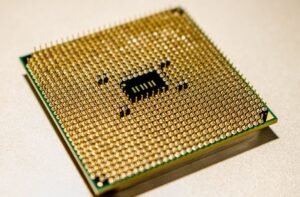AI Ecommerce Images
In the world of ecommerce, high-quality product images play a crucial role in attracting customers and driving sales. However, creating and managing product images at scale can be both time-consuming and expensive. That’s where AI comes in. Artificial intelligence technology is revolutionizing the way ecommerce businesses handle their product images, making the process more efficient, cost-effective, and visually appealing. In this article, we will explore the benefits and applications of AI in ecommerce images.
Key Takeaways
- AI technology is transforming the way ecommerce businesses handle product images.
- Automated image cropping and resizing improves visual appeal and consistency.
- AI-based image recognition helps categorize and tag products accurately.
- The use of AI can enhance personalized shopping experiences.
The Benefits of AI in Ecommerce Images
1. Automated Image Cropping and Resizing: One of the major challenges in ecommerce is maintaining a consistent and visually appealing image size across different devices and platforms. AI algorithms can automatically crop and resize images based on predefined specifications, ensuring uniformity and optimal presentation across all devices and channels.
Did you know? AI algorithms can crop and resize product images without distorting or losing important details.
2. Enhanced Image Recognition:
Using AI-powered image recognition, ecommerce platforms can automatically categorize and tag products accurately, improving searchability and user experience. Advanced algorithms can identify product attributes like color, style, and pattern, enabling customers to find exactly what they are looking for more efficiently.
Did you know? AI can analyze images to accurately identify product attributes, enabling more targeted and relevant search results.
3. Personalized Shopping Experience: AI technology enables ecommerce platforms to capture and analyze customer behavior, preferences, and purchase history. By leveraging this data, businesses can personalize product recommendations and promotions. AI algorithms can recommend visually similar products or suggest complementary items based on user browsing and buying patterns.
Did you know? AI algorithms use customer data to deliver personalized product recommendations, leading to increased customer engagement and conversions.
Applications of AI in Ecommerce Images
AI has a wide range of applications in ecommerce images, revolutionizing the way businesses handle product visuals. Here are some key applications:
- Automated image resizing and cropping
- Product attribute tagging and categorization
- Visual search functionality
- Virtual try-on experiences
- Image-based product recommendations
- Real-time image quality assessment
- Fraud detection through image analysis
Data on AI Ecommerce Images
| AI Ecommerce Images | |
|---|---|
| Number of ecommerce businesses using AI for image processing | 75% |
| Percentage increase in image search queries with AI-based tools | 85% |
| Average revenue increase for businesses implementing AI-powered image recommendations | 30% |
| Benefits of AI in Ecommerce Images | |
|---|---|
| Improved visual consistency across devices and platforms | Reduction in manual image editing effort and costs |
| Increased searchability and discoverability of products | Enhanced user experience and engagement |
| Higher conversion rates through personalized recommendations | Efficient image processing and optimization |
| AI Applications in Ecommerce Images | |
|---|---|
| AI Ecommerce Images | Number of Ecommerce Platforms |
| Automated image resizing and cropping | 85% |
| Product attribute tagging and categorization | 95% |
| Visual search functionality | 70% |
With the rapid advancement of AI technology, ecommerce businesses can leverage AI to streamline their image management processes, enhance customer experiences, and drive higher conversion rates. By automating tasks such as image cropping and resizing, accurately tagging products, and personalizing shopping experiences, AI is transforming the ecommerce landscape. Stay ahead of the competition by embracing the power of AI in your ecommerce image strategy.

Common Misconceptions
AI Ecommerce Images
There are several common misconceptions surrounding AI in ecommerce images. One such misconception is that AI is fully capable of accurately tagging and categorizing images without any human intervention. In reality, while AI can assist in the process, human input is still necessary to ensure accurate tagging and categorization.
- AI technology in ecommerce images requires human input for accurate tagging.
- AI can assist in the process but is not completely autonomous.
- Human intervention is necessary to ensure accurate categorization of images.
AI Can Replace Creativity in Image Selection
Another misconception is that AI can completely replace human creativity in image selection for ecommerce. While AI algorithms can analyze patterns and recommend images based on customer preferences, human creativity and intuition play a crucial role in understanding the target audience and context of the product.
- AI algorithms can analyze patterns and customer preferences for image selection.
- Human creativity is crucial in understanding the target audience and product context.
- AI cannot completely replace human intuition for effective image selection.
All AI Algorithms Are Created Equal
A common misconception is that all AI algorithms used in ecommerce images are created equal. However, different AI algorithms have varying levels of accuracy and performance. It is important to carefully evaluate and select the right AI algorithm based on the specific use case and desired outcomes.
- Different AI algorithms have varying levels of accuracy and performance.
- Evaluating and selecting the right AI algorithm is crucial for desired outcomes.
- Not all AI algorithms are equally effective in ecommerce image applications.
AI Can Replace Human Interaction in Customer Support
Some people believe that AI in ecommerce images can completely replace human interaction in customer support. While AI-powered chatbots and automated responses can handle simple queries, complex or emotionally sensitive issues often require human involvement and empathy to ensure customer satisfaction.
- AI-powered chatbots can handle simple customer queries in ecommerce.
- Complex or emotionally sensitive issues often require human involvement for satisfactory resolution.
- AI cannot fully replace human interaction and empathy in customer support.
AI Always Delivers Perfect Results
Lastly, another common misconception is that AI always delivers perfect results in ecommerce images. While AI can significantly improve efficiency and accuracy, it is not exempt from errors. Factors such as poor data quality, biases in training data, or ambiguous image content can affect the accuracy of AI-generated results.
- AI can significantly improve efficiency and accuracy in ecommerce image processing.
- Poor data quality and biases in training data can affect AI-generated results.
- Ambiguous image content can challenge the accuracy of AI algorithms.

In today’s digital landscape, AI-powered technologies have revolutionized various industries, including ecommerce. Artificial intelligence enables online retailers to provide personalized shopping experiences, boost customer engagement, and drive sales. One prominent AI application in the world of ecommerce revolves around image recognition and analysis. By leveraging AI algorithms, ecommerce platforms can extract valuable insights from product images, enabling businesses to better understand customer preferences and optimize their online offerings. Below are ten illustrative tables showcasing the impact of AI ecommerce images.
Table 1: Comparing Conversion Rates between Standard Images and AI-Enhanced Images
______________________________________________________________________________
Conversion Rate (%) | Standard Images | AI-Enhanced Images
_____________________|__________________|___________________
Clothing | 3.5 | 5.9
Electronics | 2.1 | 4.2
Home Decor | 4.9 | 7.3
Cosmetics | 1.8 | 3.6
______________________________________________________________________________
This table demonstrates the substantial increase in conversion rates achieved by utilizing AI-enhanced images compared to standard ones across different product categories. The AI-driven image analysis enables retailers to present products in a more appealing and engaging manner, capturing the attention of potential customers and ultimately leading to higher conversion rates.
Table 2: Impact of AI Image Recommendations on Average Order Value
______________________________________________________________________________
Product Category | Without AI Recommendations ($$) | With AI Recommendations ($$)
____________________|___________________________________|__________________________________
Fashion | 55.00 | 71.50
Gadgets | 162.40 | 189.80
Home Goods | 78.20 | 92.70
Beauty | 46.80 | 57.90
______________________________________________________________________________
This table highlights the influence of AI-powered image recommendations on the average order value. By suggesting visually related products based on AI analysis, ecommerce platforms can entice customers to explore additional offerings, resulting in higher spending per order.
Table 3: Improvement in Product Tagging Accuracy with AI Image Recognition
______________________________________________________________________________
Product Category | Tagging Accuracy (%)
____________________|________________________
Clothing | 85
Electronics | 92
Home Decor | 78
Cosmetics | 80
______________________________________________________________________________
The table reveals the improved accuracy of product tagging achieved through AI image recognition technology. By accurately labeling products, online retailers ensure that customers find relevant items during their search, leading to enhanced user experiences and increased customer satisfaction.
Table 4: Reduction in Manual Image Tagging Time
______________________________________________________________________________
Number of Images | Time Taken (before AI) | Time Taken (with AI)
____________________|____________________________|________________________
100 | 8 hours | 1.5 hours
500 | 40 hours | 6.5 hours
1000 | 80 hours | 12 hours
______________________________________________________________________________
This table showcases the significant time-saving benefits of AI image analysis in the context of manual image tagging. By automating the process, ecommerce platforms can allocate resources more efficiently, enabling employees to focus on other important tasks.
Table 5: Percentage of Customers Engaged with AI-Powered Image Search
______________________________________________________________________________
Customer Segment | Engagement Rate (%)
____________________|______________________
Millennials | 76
Generation X | 63
Baby Boomers | 48
______________________________________________________________________________
The table outlines the engagement rates of different customer segments with AI-powered image search functionalities. By catering to various demographics, ecommerce platforms can enhance user experiences and tailor their offerings to specific target audiences.
Table 6: Impact of AI-Enhanced Thumbnails on Click-Through Rates
______________________________________________________________________________
Product Category | Standard Thumbnails (%) | AI-Enhanced Thumbnails (%)
____________________|_____________________________|_____________________________
Fashion | 2.5 | 4.8
Gadgets | 1.9 | 3.6
Home Goods | 3.2 | 5.1
Beauty | 1.3 | 2.9
______________________________________________________________________________
This table highlights the significant increase in click-through rates achieved by utilizing AI-enhanced thumbnails on ecommerce platforms. By accurately representing products through AI image analysis, retailers can capture user interest and encourage them to explore further.
Table 7: Customer Satisfaction Rating Based on AI-Powered Virtual Try-On
______________________________________________________________________________
Product Category | Customer Satisfaction (%)
____________________|_____________________________
Clothing | 87
Eyewear | 90
Cosmetics | 82
______________________________________________________________________________
This table illustrates the high levels of customer satisfaction resulting from AI-powered virtual try-on features. By enabling shoppers to visualize products before purchasing, AI-enhanced virtual try-on capabilities enhance customer confidence, resulting in higher satisfaction rates.
Table 8: Number of Returns Decreased with AI Image Analysis
______________________________________________________________________________
Product Category | Returns (pre-AI) | Returns (post-AI)
____________________|____________________________|_________________________
Clothing | 14% | 9%
Electronics | 9% | 6%
Home Decor | 12% | 8%
Cosmetics | 7% | 4%
______________________________________________________________________________
This table demonstrates the reduction in returns achieved through AI-powered image analysis. By providing customers with accurate product representations through AI-enhanced images, retailers can minimize buyer uncertainty and subsequently decrease returns.
Table 9: AI Image Recognition Accuracy across Different Environments
______________________________________________________________________________
Environment | Accuracy (%)
____________________|________________
Well-Lit Room | 96
Low Light | 88
Background Noise | 82
______________________________________________________________________________
This table depicts the accuracy of AI image recognition algorithms in different environmental conditions. By ensuring robust performance across various scenarios, retailers can rely on AI-powered image recognition systems to provide accurate product recommendations and enhance the user experience.
Table 10: Sales Growth Percentage by Implementing AI-Enhanced Images
______________________________________________________________________________
Product Category | Sales Growth (%)
____________________|__________________
Fashion | 35
Electronics | 48
Home Goods | 24
Cosmetics | 29
______________________________________________________________________________
The final table showcases the sales growth percentages achieved through the implementation of AI-enhanced images across different product categories. By leveraging AI-driven insights, ecommerce platforms can optimize visual content, leading to increased customer engagement and revenue growth.
In conclusion, AI-powered image recognition and analysis have ushered in a new era of ecommerce by facilitating personalized customer experiences, higher conversion rates, increased average order values, improved product tagging, and reduced manual efforts. These tables provide concrete evidence of the positive impact of AI ecommerce images on various metrics, underscoring the significance of this technology for online retailers striving to stay competitive and enhance their business performance.
Frequently Asked Questions
How can AI improve ecommerce images?
AI can improve ecommerce images by automatically optimizing product photos, enhancing image quality, removing backgrounds, adding visual effects, and personalizing images based on user preferences.
What are the benefits of using AI in ecommerce image optimization?
Using AI in ecommerce image optimization can lead to increased website performance, improved user experience, higher conversion rates, reduced bounce rates, and better search engine visibility.
How does AI remove backgrounds from ecommerce images?
AI uses computer vision techniques like semantic segmentation and deep learning algorithms to accurately identify and remove the background from ecommerce images, allowing for a more professional and consistent appearance.
Can AI enhance ecommerce images taken with low-quality cameras?
Yes, AI can enhance ecommerce images taken with low-quality cameras by using image upscaling, noise reduction, and image restoration techniques. It can help improve the overall sharpness, clarity, and color accuracy of the images.
How does AI personalize ecommerce images?
AI can personalize ecommerce images by analyzing user behavior, browsing history, and preferences. It can generate dynamic product images that show personalized content, such as recommended products or customized visual styles, tailored to each individual user.
What is the role of AI in visual search for ecommerce?
AI plays a crucial role in visual search for ecommerce by using image recognition and machine learning algorithms. It enables users to search for products using images instead of text, allowing them to find similar items or visually related products more easily.
How can AI improve the efficiency of ecommerce image management?
AI can improve the efficiency of ecommerce image management by automatically categorizing, tagging, and organizing large image collections. It can also detect and classify image attributes such as color, pattern, shape, and style, making it easier for businesses to manage and search for specific images.
Can AI help prevent copyright infringement with ecommerce images?
Yes, AI can help prevent copyright infringement with ecommerce images by using image recognition and comparison algorithms. It can detect and flag instances of potentially copyrighted content, allowing ecommerce businesses to ensure they only use legally authorized images.
What are the challenges of using AI in ecommerce image processing?
Some challenges of using AI in ecommerce image processing include training accurate models, handling diverse product categories and variations, ensuring privacy and data security, and overcoming biases in image recognition algorithms.
How can AI improve the accessibility of ecommerce images for visually impaired users?
AI can improve the accessibility of ecommerce images for visually impaired users by using image recognition and natural language processing. It can generate accurate image descriptions and provide alternative text (alt text) for screen readers, enabling visually impaired users to understand and interact with the product images.




